Pontiac9999
Well-known member
I heard that some M1843 wappens were cast and was wondering if anyone would happen to have a picture of the backside of a plate like this?
Adam
Adam
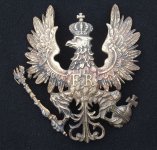
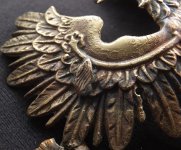
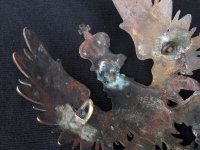
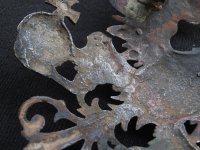
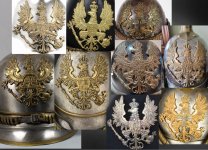
It‘s a nice eagle, but not for a Pickelhaube.Hi I saw this wappen which from the front looks like the cast type and personally I find it very well made, but the back is different from both the cast and the printed ones. It is also not arched
What is it, a fake?
Thanks Sandy. I think it’ll have to remain a mystery as I don’t want to risk breaking it.The Germans back then were proud of their origins and their military, just as they are in the USA today. Such eagles were therefore often marketed as souvenirs, so a military background doesn‘t necessarily have to be present. There are a number of items that were decorated with imperial eagles or Prussian eagles. I can therefore well imagine that such eagles adorned one or two office walls simply because the residents were proud Prussians and loyal monarchists.
On the other hand, the helmet eagles on the shapka M1843 looked very similar to this one. Such an EM shapka is offered at Weitze and the eagle has identical tail feathers:
Preußen Tschapka Modell 1843 für Mannschaften im Westpreußischen Ulanen-Regiment Nr. 1 - Preussen - Kaiserreich & Weimarer Rep.: Uniformen, Kopfbedeckungen, Stahlhelme etc. - Militaria / Helmut Weitze
Preußen Tschapka Modell 1843 für Mannschaften im Westpreußischen Ulanen-Regiment Nr. 1 Standort Militsch, Westpreußen. Kammerstück, um 1843. Schwere Tschapka aus schwarzem Leder mit fest vernähtem weißem Kuvert auf Spanischrohr, komplett mitwww.weitze.net
But the eagle shown above in #4 was never intended for a helmet in my opinion. There is only the soldered tab for the ring. If it were intended for a helmet you should at least be able to see some solder joint residue on the wings. But I can‘t see any residue there and I would suspect something similar on your eagle. It would be interesting to see if the eagle has threaded pins on its wings. Additionally, I don't know if you can bend cast brass without breaking it.
